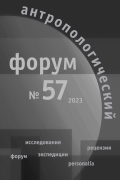Two Brothers, Four Brothers: Models of Relations between the Heroes of Narratives as Mythological Motifs
DOI:
https://doi.org/10.31250/1815-8870-2023-19-57-108-130Keywords:
dualistic mythologies, twins in mythology, American Indian mythology, peopling of the New WorldAbstract
This paper represents a first attempt to analyze the global spread of a particular kind of mythological motifs which are neither images nor fragments of the plot but, rather, versions of narratives influenced by the number of the main characters and the peculiarity of their interaction. Many texts that are addressed here were interpreted earlier by other researchers as indications of a particular type of social organization thought to be widespread in primitive society. On closer inspection, the “dualistic mythologies” or “the myth about the twins” include dissimilar forms of relations between the main characters of the story, while regions where these forms are widespread do not overlap. Patterns of the area distribution of the motifs presume their connection to the historical processes likely related to different episodes of the peopling of the Americas. The version with two brothers or companions—one of which is a smart victor and another is a simpleminded failure—is typical for South America to the East of the Andes and for Melanesia. The myth about two creators was recorded in three different areas of North America and has numerous parallels across continental Eurasia. The version with four brothers that share one name—one of them active, the three others akin to his less independent shadows—is found only in the Northwestern Amazonia and in the Northern part of the Columbian Plateau.

